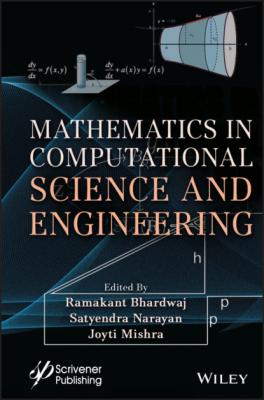Mathematics in Computational Science and Engineering. Группа авторов
Чтение книги онлайн.
Читать онлайн книгу Mathematics in Computational Science and Engineering - Группа авторов страница 17
 id="ulink_f3a65499-53c1-5358-ab28-e0884b2f3889">
id="ulink_f3a65499-53c1-5358-ab28-e0884b2f3889">
Table 1.7 Optimal solution of the TCU(Y).
| TCU(y) | ||||
|---|---|---|---|---|
| x | 0 | 1 | 2 | 3 |
| f(x) | 17.32 | 12.25 | 49.19 | 69.57 |
Table 1.8 Optimum results of the reorder in Le D.
| Le D | ||||
|---|---|---|---|---|
| x | 0 | 1 | 2 | 3 |
| f(x) | -0.9 | -0.36 | 1.6 | -0.78 |
Table 1.9 The optimal results of the inventory in trapezoidal rule.
| Parameters | T*0 | N | LE | TCU(y) | Le d |
|---|---|---|---|---|---|
| x | 0 | 1 | 2 | 3 | 4 |
|
|
37.32 | 7.73 | -0.038 | 37.36 | -2.01 |
Figure 1.3 Trapezoidal rule in brownian movement.
It became accepted that there might be no time along requesting and buying of materials. The ascertaining Reorder level includes the figuring of utilization cost every day. Consider an association that works with a provider. The organization stores a few items renew by the providers to fulfil its Customers need.
Figure 1.3. Depicts the applicable of Inventories of Parameters Y ∗, T0, N, LE, TCU(Y), Le d calculation and the subsequent optimization of Inventories with the aim of minimizing the proposed goal.
1.4.1 Numerical Examples
This Numerical Example to illustrate the above Mathematical model.
Parameters 1: k1 = $105, H = $.06, d = 29 units per day L = 29 days. Optimal solutions Y* = 346.41,
Parameters 2: k1 = $52, H = $.04, d = 20 units per day L = 29 days. Optimal solutions Y* = 228.04,
Parameters 3: k1 = $98, H = $.02, d = 41 units per day L = 29 days. Optimal solutions Y* = 633.88,
Parameters 4: k1 = $104, H = $.03, d=22 units per day L = 29 days. Optimal solutions Y* = 372.38,
1.4.2 Sensitivity Analysis
The EOQ model of Inventory Management takes over the day-by-day utilization of Inventories, the optimum estimation of the orders amount y is controlled by minimizing TCU(Y).
The study effects of change in the value of the system are displayed from Table 1.4 to Table 1.9. This is
Important Inventory Parameters (Y ∗, T0, N, LE, TCU(Y), LEd) are classified.
By Parameters 1: The set-up cost increases,
By Parameters 2: The set-up cost increases,
By Parameters 3: The set-up expense increases,
By Parameters 4: The set-up cost expands,
This Y* is not Trapezoidal Rule and hence it is not formed a Brownian movement, but remaining Parameters T0, N, LE, LEd, TCU(Y) is a Trapezoidal Rule. It is framed a Brownian Movement.
At last implementing Sensitivity assessment on the decision factors through changing the Inventory parameters (Y ∗, T0, N, LE, LEd, TCU(Y). In sensitivity investigation make fluctuate to the factors built into that Inventory to provide the Brownian movement. This method is generally sensitivity to change around the EOQ.